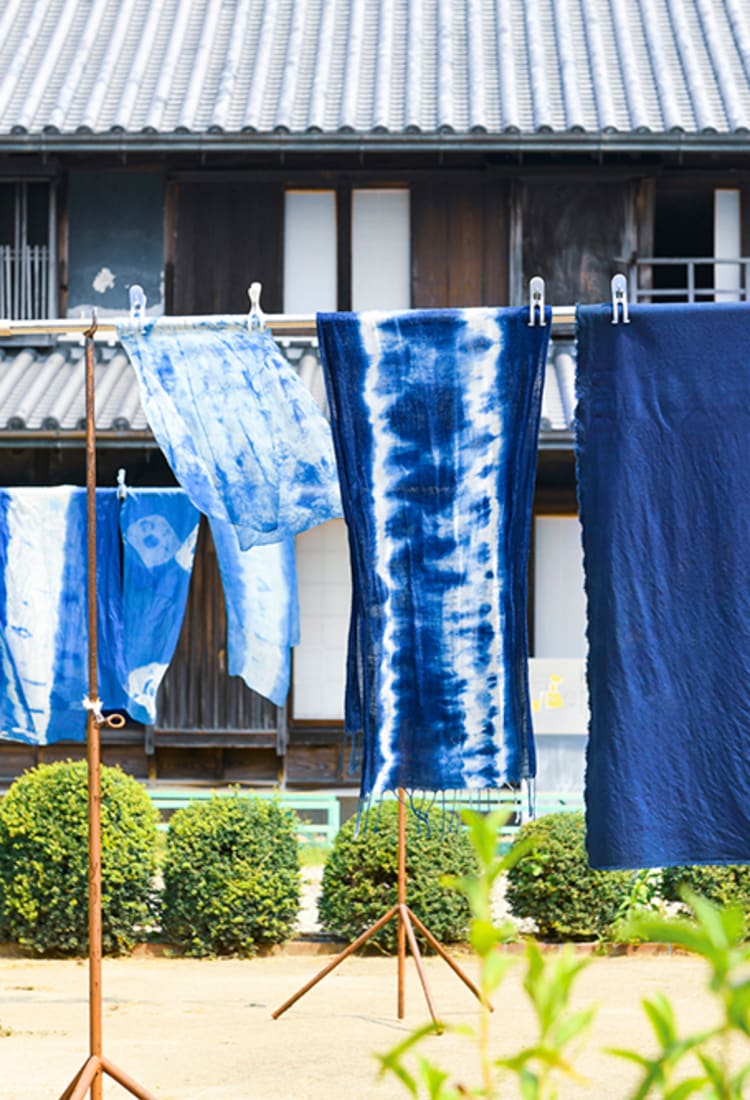
2020.09 Exploring the Origins of Aizome―Traditional Indigo Dyeing
A dyeing practice with an 800-year history in Tokushima
Tokushima is one of four prefectures in Shikoku—Japan’s smallest major island, located around 250 km southwest of Kyoto— and it is one of Japan’s main producers of natural indigo dye. Dyeing fabric using plant-based natural dyes has long been part of Tokushima culture. The prefecture used to be part of the Awa province, and its unique brand of indigo dye, “Awa-ai,” refers to this heritage. Aizome refers to the practice of traditional indigo dyeing. Aizome, indigo dyed clothing, is made with natural dye. The clothes are cool in summer, warm in winter, and have antibacterial properties.
Tokushima is dominated by mountains and sea. Every year in August, over a million people visit the prefecture to dance in the Awa Odori Festival—a traditional folk-dance festival held over several days. The prefecture is around a 70-minute flight from Tokyo.
Aizome dyeing in Tokushima dates back nearly 800 years, and the prefecture’s location is key to the development of the practice. The Yoshino River that runs through northern Tokushima irrigates the surrounding land, providing an ideal environment for the cultivation of the Japanese indigo plant (Perisicaria tinctoria), the plant from which indigo dye is extracted.
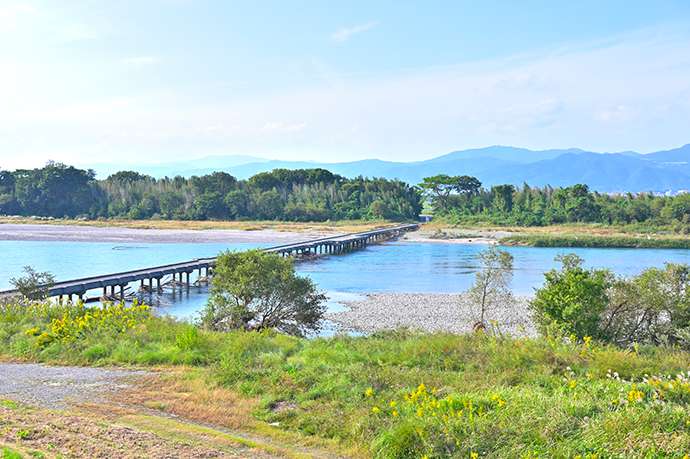
The Yoshino River runs through northern Tokushima Prefecture
During the 16th century, the production of indigo dye proved lucrative for the area. The government at the time put protections on the land and actively encouraged dye production. The industry grew, and over time, processing techniques were refined, and the quality of the indigo dye was raised. The high-quality dye was called “Awa-ai” and the brand became known across Japan.

Workers separate leaves and stalks— the raw materials needed to produce indigo dye. Over 2,000 Tokushima farmers were involved in cultivating and processing the dye during the peak production period.
Natural indigo dye—born from plants and microorganisms
The raw material necessary to produce Awa-ai dye is the indigo (ai) extracted from the Japanese indigo plant. The plant grows in abundance in the town of Kamiita, one of Tokushima’s main production sites for ai. Kenta Watanabe is both a dyer and one of very few remaining “aishi”—dye artisans who produce their own dye.
He plants the seeds in March and harvests the plants twice in summer. However, the entire process from planting the indigo to producing the dye takes one year. Kenta is one of only a handful of artisans involved in cultivating and processing the plants, as well as designing, manufacturing and selling dyed products.
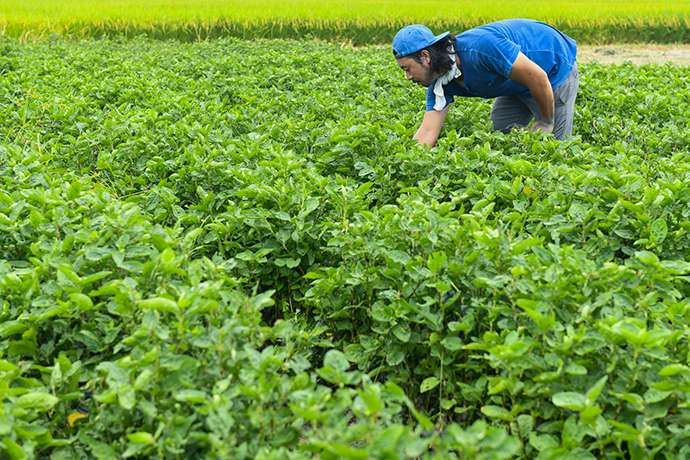
Kenta tends to a field of Japanese indigo plants
Kenta is one of a handful of artisans who does everything, from cultivating ai to creating raw materials, designing and manufacturing products, and sales. The indigo plant grows for around five months, after which the leaves are picked and fermented for about three months. The result of the fermentation process is a material called “sukumo.” Kenta explains that the quality of sukumo determines the vividness of the indigo.
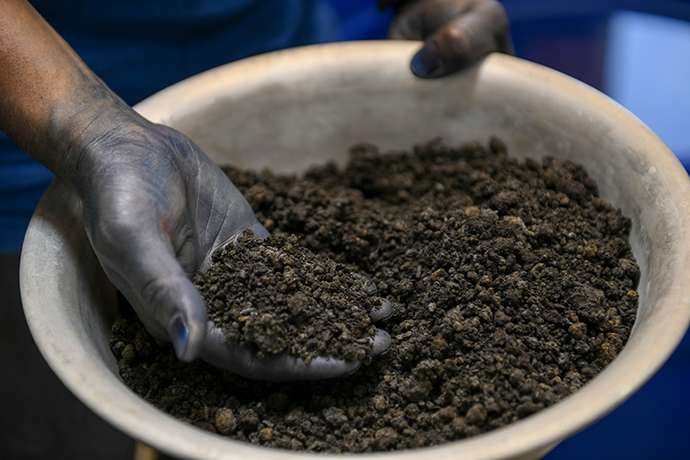
Japanese indigo plant leaves are fermented to produce sukumo—the base material from which indigo dye is produced
The ai fostered by nature is a living being. The quality of the sukumo determines the vividness of the color. Once the sukumo is produced, artisans use a centuries-old method called lye fermentation to create the liquid indigo dye. First, Sukumo is left to rest for three months. After this time, the aishi add natural wood ash, sake and wheat bran. This forms a highly alkaline environment that activates microorganisms and prompts the deoxidation necessary to create the dye. Nowadays, chemical dye is used for many indigo products. However, the artisans of Kamiita strive to keep the traditional technique of lye fermentation alive.
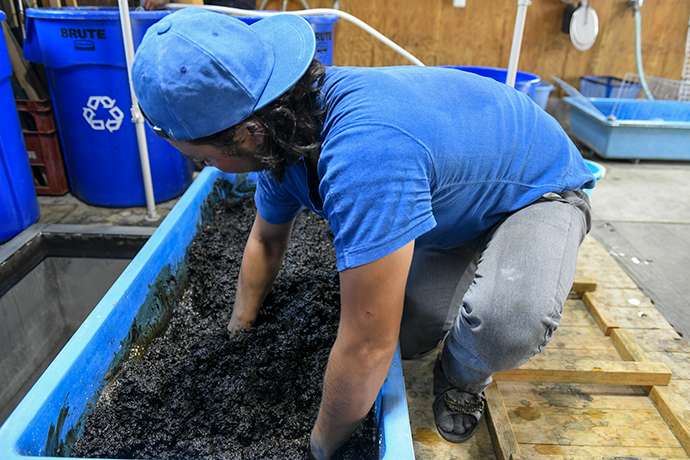
Kenta practices natural lye fermentation
Kenta explains the benefits of using a natural indigo dye over a chemically produced one. He states that natural dye penetrates deep into the clothing fibers, meaning the color is less likely to fade over time.
He then explains further about the dye, emphasizing the important role of the microorganisms and explaining that the quality of the dye is the result of Tokushima’s specific natural environment. In that sense, Tokushima itself is the key factor behind the beautiful deep indigo color of the dye. He is meticulous about going beyond the framework of traditional culture to make aizome products that suit modern life.
Long-established techniques of indigo dyeing
Traditional techniques of aizome—or indigo dyeing—have been practiced for a long time. Different techniques lead to different results.
Danzome
The danzome technique produces a color and shade gradation effect. Artisans dye the fabric in stages, shifting the position of the fabric as it is dipped into the dye.
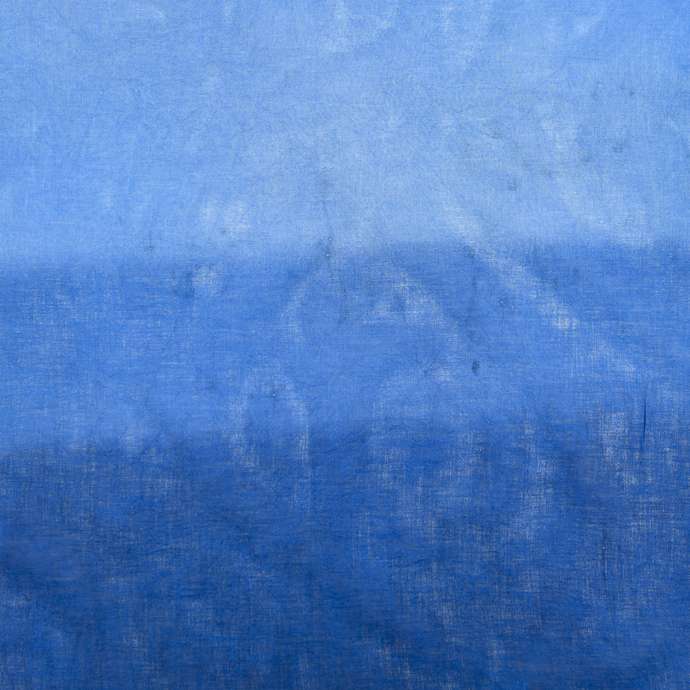
Skilled artisans can create simple but beautiful gradations in the fabric
Shiborizome (tie-dyeing)
Fabric is gripped, tied, or folded during the dyeing process leaving undyed white patches. The shiborizome process creates a variety of patterns.
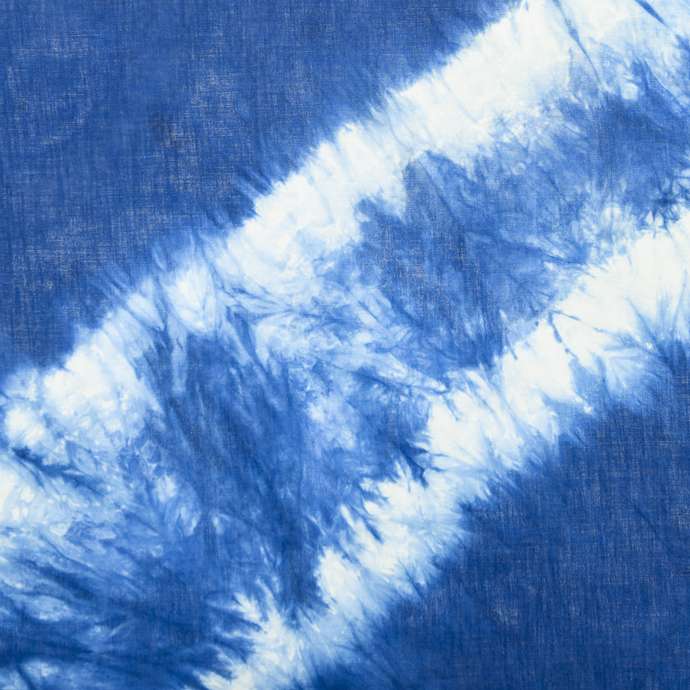
Shiborizome (tie-dyeing) is the most basic of all dyeing techniques
Murakumozome
This style is a variation on the shiborizome technique. Artisans gather up the fabric before dyeing it, producing uneven color and shade patterns.
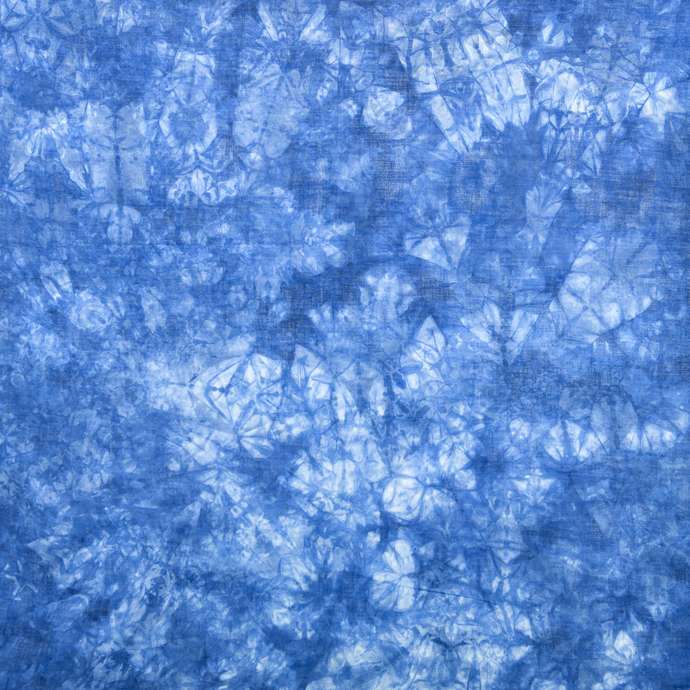
The murakumozome technique forms unique patterns
Itajimeshibori
This is another variation on the shiborizome technique. Fabric is folded and placed between pieces of wood that have been fashioned into various shapes. This method can result in geometrical or asymmetric patterns.

A bold pattern created by the itajimeshibori technique
Bassen
The fabric is first dyed uniformly with indigo. Then, artisans place stencils on the pre-dyed fabric. The application of a chemical to the stencil creates an elaborate design with lightened areas.
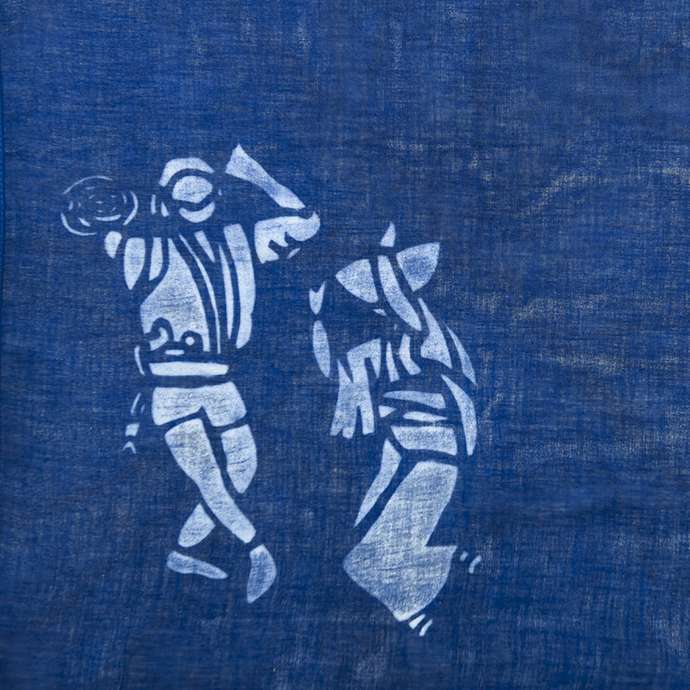
The bassen technique allows for more intricate design patterns
Roketsuzome is the most challenging dyeing technique. Artisans use melted wax to create unique designs.
Create your own vivdly colored aizome fabric
Ai no Yakata is a historical museum where visitors can dye their own fabric using aizome techniques. Staff at the museum can guide you through each stage of the process in English. The experience takes around 20 minutes, and reservations are not required. Visitors choose the type of fabric and dyeing method. The stages below detail the process for dyeing a handkerchief using the danzome method.
Crafting aizome
1. First, purchase the base material that you will dye. Choose from handkerchiefs, tenugui (traditional hand towels), towels, silk stoles, and furoshiki (wrapping cloth). One of the simplest ways to experience aizome dyeing is to choose a handkerchief and dye using the danzome technique.
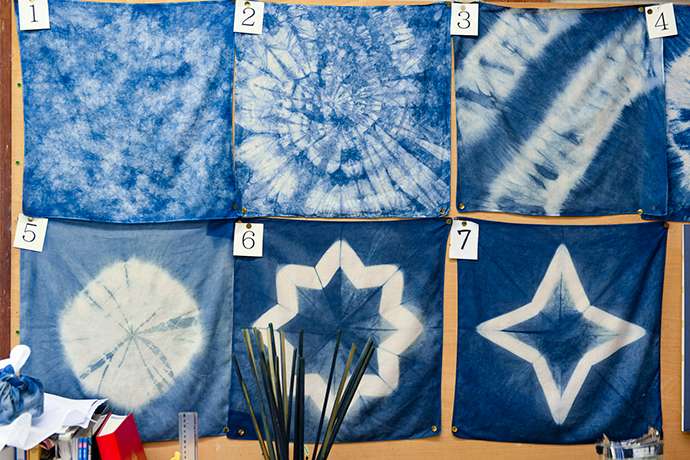
Visitors can choose one of seven dyeing patterns
2. Attaching a bamboo rod to the top of the handkerchief allows for easy handling. The first stage of the dyeing process is to dip one third of the fabric slowly into the dye. It is important to hold the fabric straight when dipping.
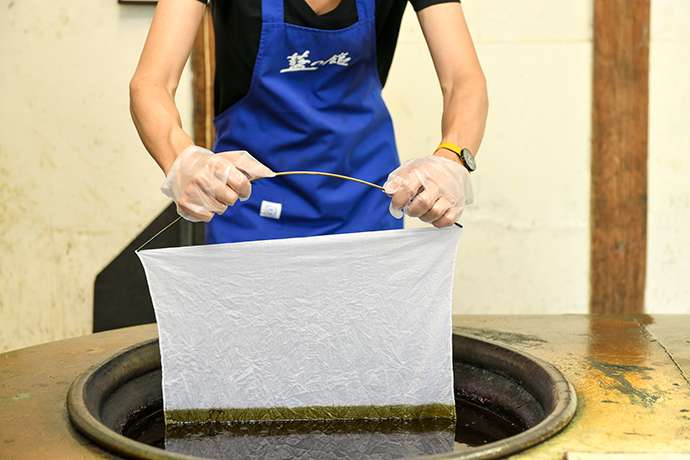
The first stage of the danzome dyeing technique
3. Hold the fabric in place for one minute, before lifting it out. Allow the fabric to air-dry for one minute before placing back in the dye. Repeat the process.
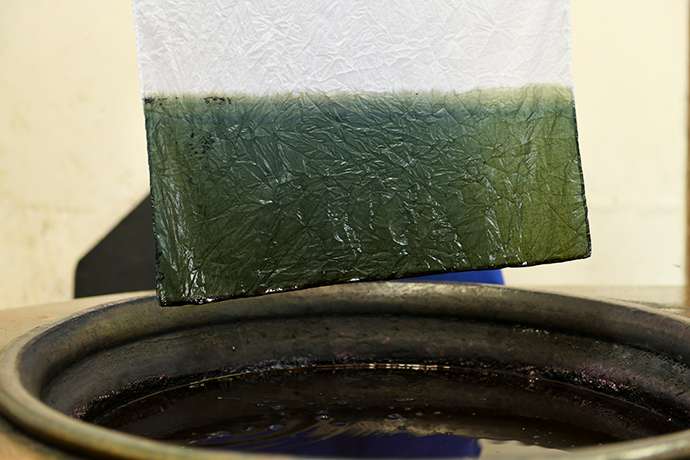
When the fabric is exposed to air, the dye oxidizes and changes color
4. The next step is to dip two thirds of the handkerchief into the dye for one minute, before lifting out and air-drying for the same amount of time. Dyeing the handkerchief in thirds leads to a simple gradation pattern, where the sections of fabric dipped in the dye for longer will be darker.

The second stage of the danzome dyeing process
5. Turn the handkerchief upside down, attach the bamboo handle, and dip the entire handkerchief into the dye for one minute. At this point, the fabric will still be a deep green. A further step is required to produce the indigo color.
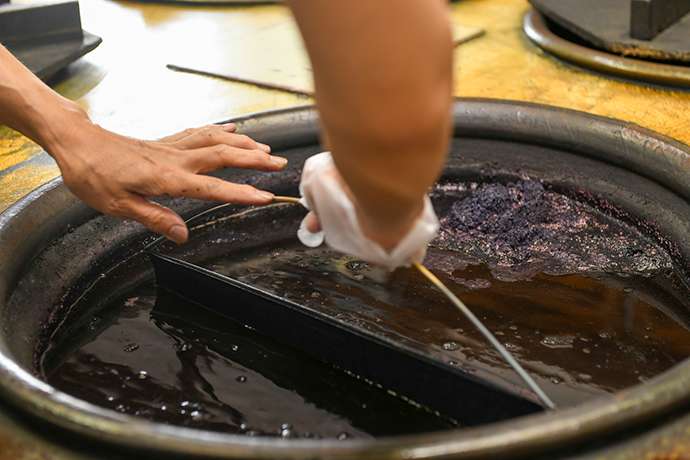
The final stages of the dyeing experience
6. Air-dry the handkerchief for one minute before thoroughly wringing out and unfurling. Washing it in water instantly turns the handkerchief a vivid indigo blue.
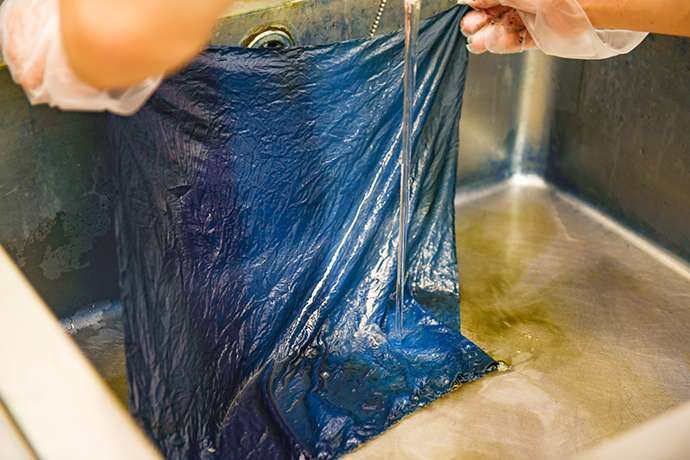
The indigo color is only revealed at the end of the dyeing process
7. Finally, after thoroughly wringing the handkerchief, dry and iron.
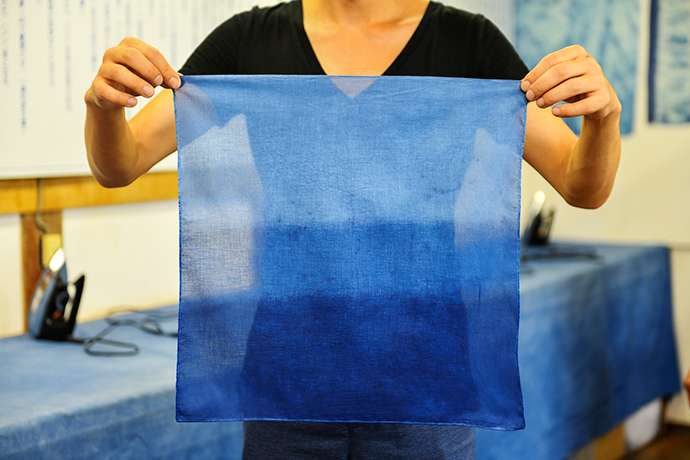
Repeating the one-minute dip and air-dry process around 30 times will bring out an intense shade of indigo called kachiiro.
After the aizome dyeing experience, browse the many exhibits housed within the museum. Ai no Yakata holds approximately 100 traditional tools once used to produce Awa-ai.—the indigo dye produced in Tokushima. The tools form part of Tokushima heritage and have been designated Important Cultural Properties by the Japanese government. Visitors can comfortably enjoy half a day at the museum. There are panel displays in English.
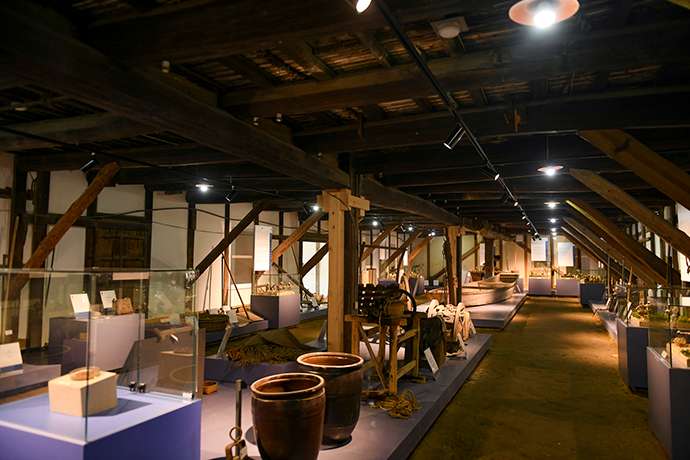
The Ai no Yakata historical museum houses many Important Cultural Properties
Purchase rare aizome products
While in Tokushima, consider a trip to Rampuya. This store dates back to 1912 and sells aizome products that have been dyed with natural indigo. Items using dye from natural lye fermentation are rare; less than one percent of the world’s dyed indigo products are created this way.
Rampuya also stocks products made using Awa Shoai Shijira-ori—an indigo weaving technique that has been designated a traditional craft by the Japanese government.

Rampuya stocks a selection of original products
Awa Shoai Shijira-ori is a light, cool cotton fabric. Items on the Rampuya shelves include traditional summer Japanese clothing such as yukata and jinbei, tenugui and furoshiki. There are also more modern items such as shirts and scarves. Aizome denim items that retain their color and become richer in hue the more they are worn are also available.
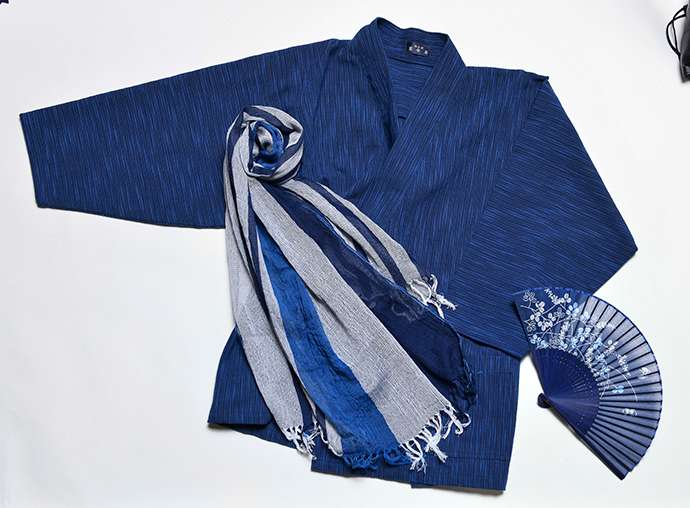
Samue is a type of traditional Japanese roomwear. Stoles and folding fans are also stocked.
Visitors to Tokushima can immerse themselves in a world of indigo. Experience the traditional art of aizome and return home with some unique, traditionally crafted Japanese items.
Watanabe’sVisitors can observe Kenta Watanabe’s factory. Reserve online. |
Aizumicho Historical Museum (Ai no Yakata)Required time approx. 20 minutes. Price varies depending on item to be dyed. |
|
WEB:https://discovertokushima.net/en/culture/museums_history/aizumicho-historical-museum-ai-no-yakata/ |
RampuyaCredit cards accepted. |
Tokushima Prefecture |
|
WEB:https://www.pref.tokushima.lg.jp/en/japanese/natural_culture/traditional_culture/awa-ai |
Japan Heritage Official Site |
|
WEB:https://www.japan.travel/japan-heritage/full_list#shikoku-region |




























































